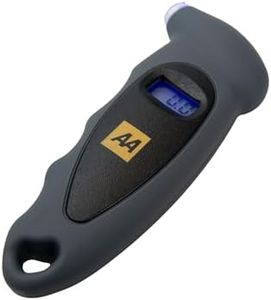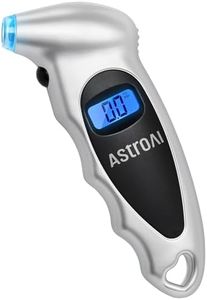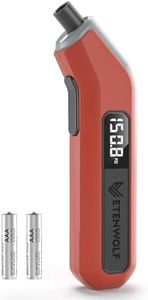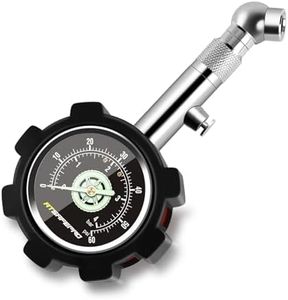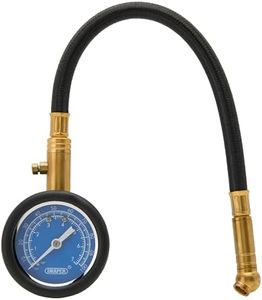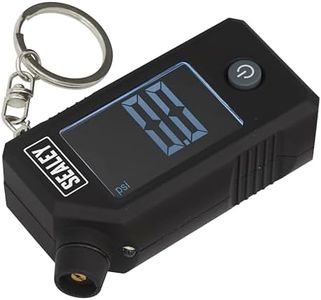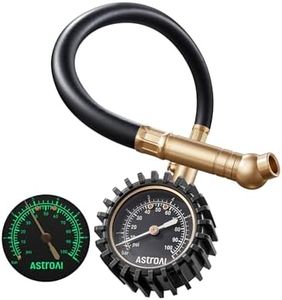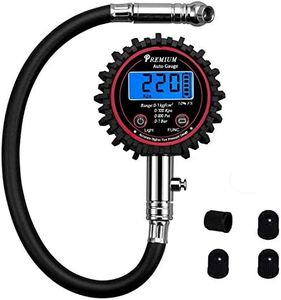We Use CookiesWe use cookies to enhance the security, performance,
functionality and for analytical and promotional activities. By continuing to browse this site you
are agreeing to our privacy policy
10 Best Tire Pressure Gauges
From leading brands and best sellers available on the web.Buying Guide for the Best Tire Pressure Gauges
Choosing the right tire pressure gauge is essential for maintaining the correct tire pressure, which can improve fuel efficiency, extend tire life, and ensure safety on the road. When selecting a tire pressure gauge, consider the type of vehicle you have, how often you plan to use the gauge, and the level of precision you require. Understanding the key specifications will help you make an informed decision that best suits your needs.Type of GaugeTire pressure gauges come in three main types: stick, dial, and digital. Stick gauges are compact and easy to use, but they can be less accurate. Dial gauges have a clock-like face and are generally more precise, making them suitable for those who need a reliable reading. Digital gauges offer the most accuracy and are easy to read, often with backlit displays for use in low light. Choose a stick gauge for basic, occasional use, a dial gauge for moderate use with a need for precision, or a digital gauge for frequent use and the highest accuracy.
Pressure RangeThe pressure range of a tire pressure gauge indicates the minimum and maximum pressure it can measure. This is important because different vehicles require different tire pressures. For example, passenger cars typically need a gauge that measures up to 60 PSI, while trucks or RVs may require a gauge that goes up to 100 PSI or more. Ensure the gauge you choose covers the pressure range needed for your vehicle's tires to get accurate readings.
AccuracyAccuracy refers to how close the gauge's reading is to the actual tire pressure. This is crucial for ensuring your tires are inflated to the correct pressure, which affects safety and performance. Accuracy is often expressed as a percentage of the full scale. For most users, a gauge with an accuracy of ±1-2% is sufficient. If you need precise measurements, such as for racing or high-performance vehicles, look for a gauge with higher accuracy.
DurabilityDurability is about how well the gauge can withstand regular use and environmental conditions. A durable gauge is made from high-quality materials that resist wear and tear, such as metal or reinforced plastic. If you plan to use the gauge frequently or in harsh conditions, such as extreme temperatures or wet environments, opt for a more durable model. For occasional use, a less robust gauge may suffice.
Ease of UseEase of use encompasses how simple the gauge is to operate and read. Features like a large, clear display, ergonomic design, and easy-to-read markings contribute to ease of use. Digital gauges are typically the easiest to use, with clear digital readouts, while dial gauges may require more effort to interpret. Consider how comfortable you are with using different types of gauges and choose one that you find straightforward and convenient.


